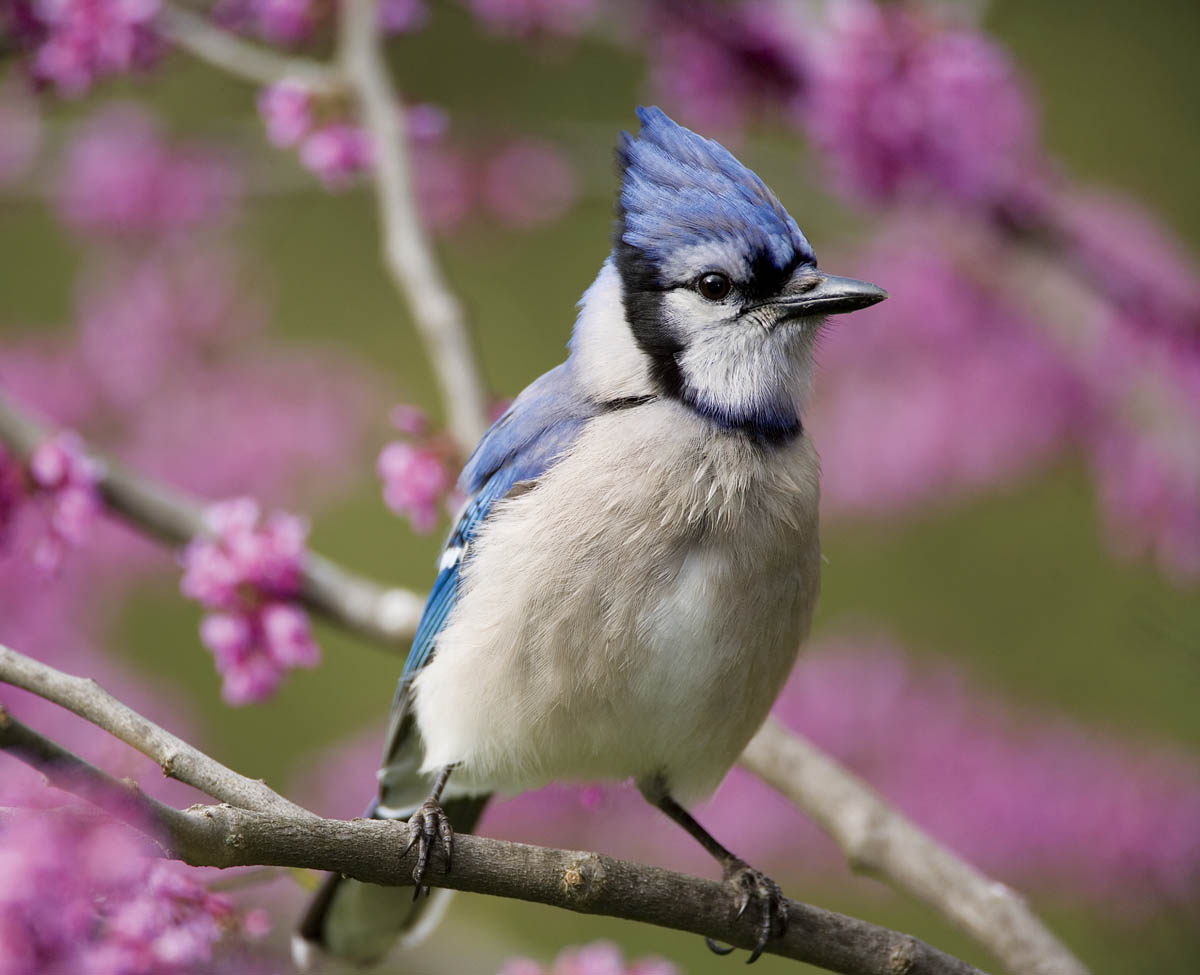
Blue Jay adult
Intelligence, curiosity, industriousness. Devotion to family and community. The Blue Jay, one of the most beautiful birds in North America, embodies all those qualities in a 3-ounce package topped off with a perky crest. Blue Jays migrate, although some remain in the farthest reaches of their northern range all winter.

Blue Jay adult
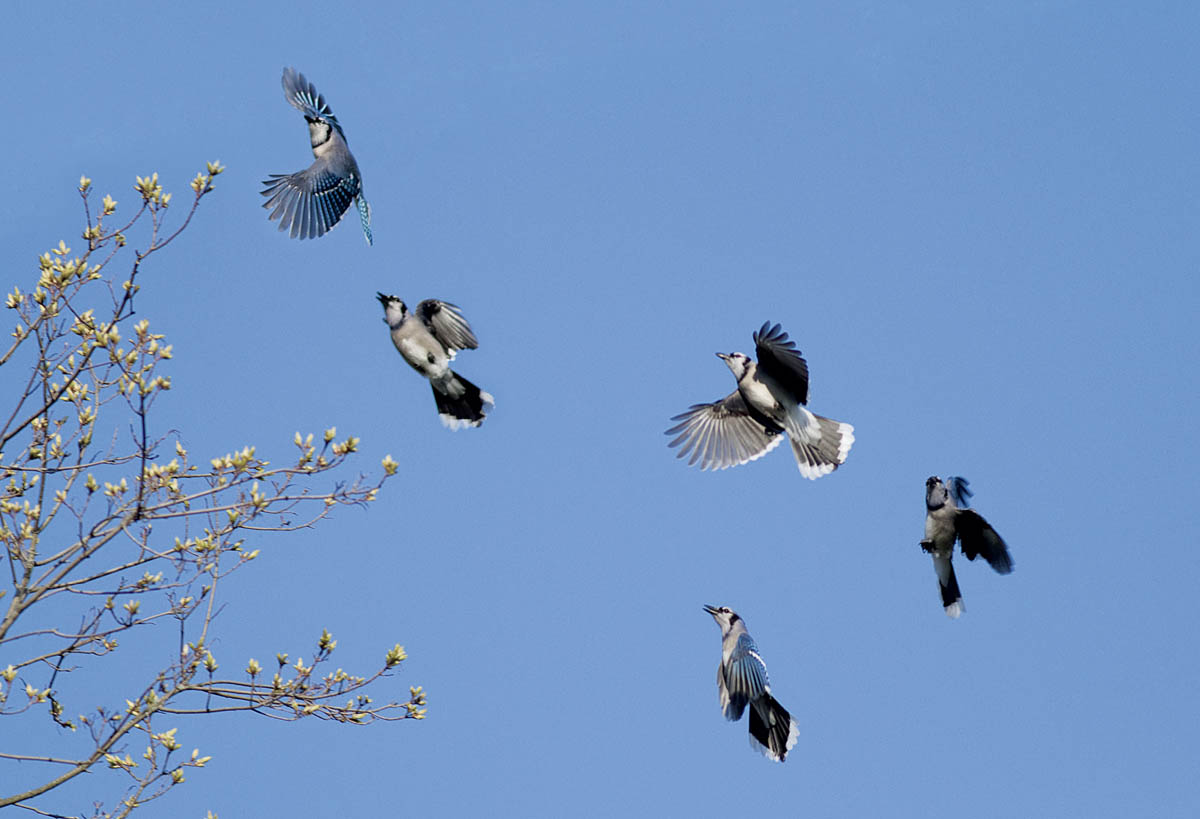
In spring, Blue Jays perform noisy social displays, moving in loose flocks through woodlands and suburban neighborhoods and along shorelines. They fly short distances and then land to perform intense bobbing displays while calling loudly. Flocks fragment and rejoin, and other jays join in or drop out along the way.
The Blue Jay’s raucous spring social displays may help sort out conflicts over breeding space. Observations of banded birds show that most of the birds in these noisy flocks are already paired off. Some Blue Jays begin nest-building around mid-March, even as many jays are still migrating. Jays maintain long-term pair bonds and may mate for life.
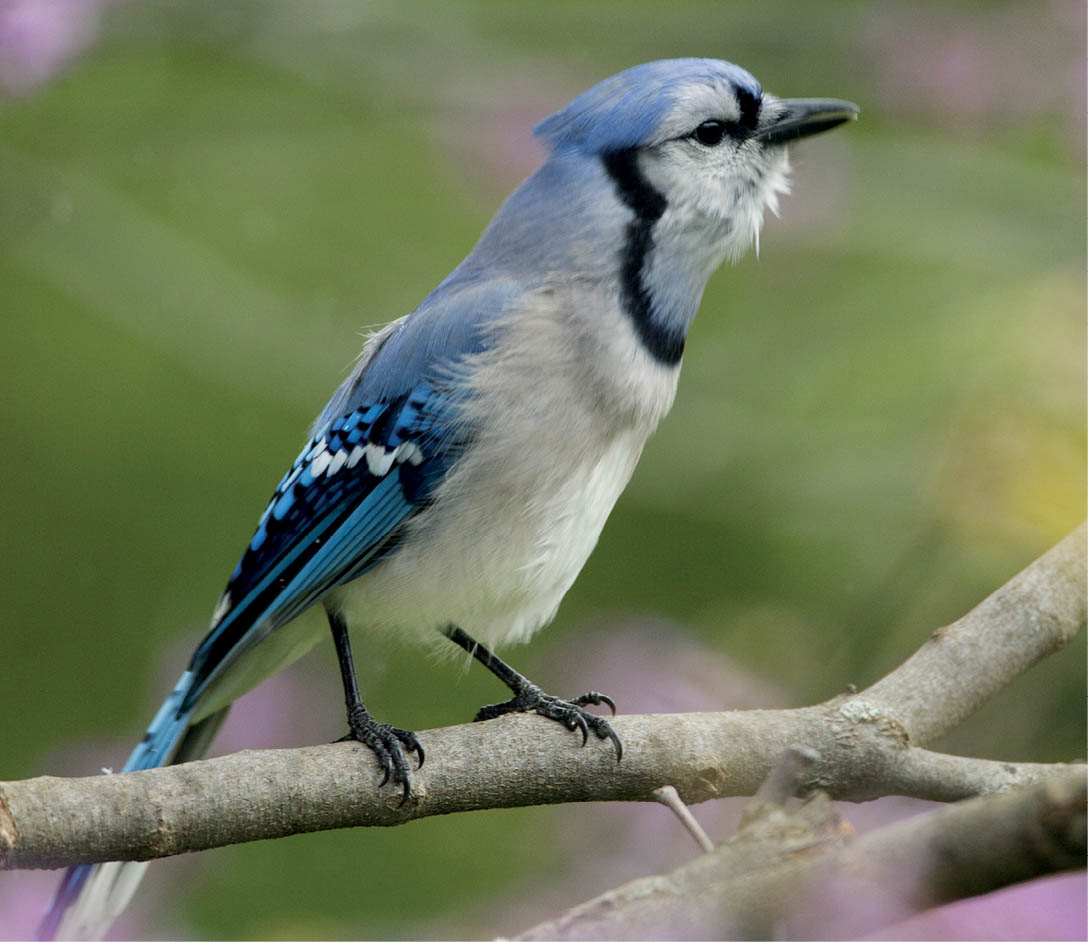
A Blue Jay gives its ringing “pump-handle” call in spring. Unlike the familiar, harsh jay call, this is a clear, musical whistle, which sounds like a bell or like a squeaky gate. Perched Blue Jays, especially in groups, may bob up and down, pointing their bills upward and waving their heads from side to side as they call.
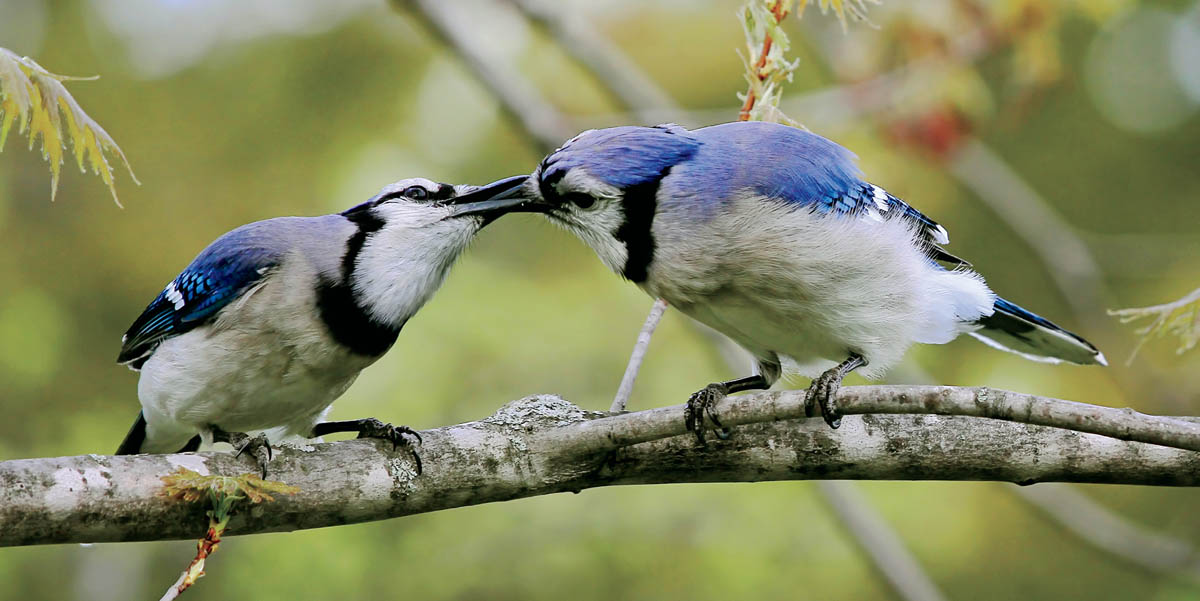
A mated pair of Blue Jays “kiss” as part of courtship. Blue Jays often form life-long pair bonds. The male feeds the female frequently before they nest. The two may touch bills without exchanging food or pass a twig back and forth. Before copulation, the female often sidles up to the male, crouching with quivering wings and tail and calling softly.
Female jays incubate while males bring food. When the clutch is first completed, the mother incubates for at least 40 minutes out of every hour, increasing her stint until by the final days before hatching, she leaves only for moments. Incubation lasts 16 to 19 days; the entire clutch usually hatches on the same day.
Inside the egg, a developing chick grows cramped just before hatching. Its head is curled under one wing with the tip of the bill and egg tooth pointed toward the smaller end of the egg. The hatchling opens and closes its mouth frequently as it struggles, scraping the egg tooth against the inner shell and using its wings to force the cracked egg open. Parents may eat the eggshell fragments.
Baby songbirds poop immediately after a feeding, when the attending parent removes the fecal sac. While nestling jays are very young and not digesting completely, the parent may sometimes eat the fecal sac. To dispose of it, they may carry it in their bill or put it in the gular pouch (a throat sac that serves as a storage bag the way chipmunk cheeks do) to carry it away from the nest.
Blue Jay eggs are protected from sharp-eyed predators by their cryptic coloring, or camouflage. As a species, Blue Jays are accused of raiding other birds’ nests, but scientists have found little evidence of that behavior.
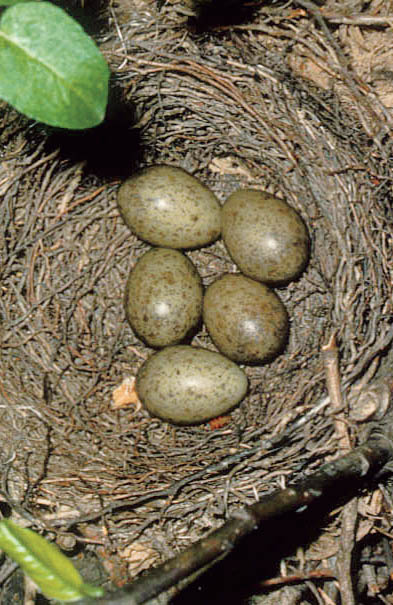
Incubation. Well hidden in shrubbery, a female Blue Jay incubates her eggs. She leaves the nest only briefly, to preen, defecate, or be fed by her mate.
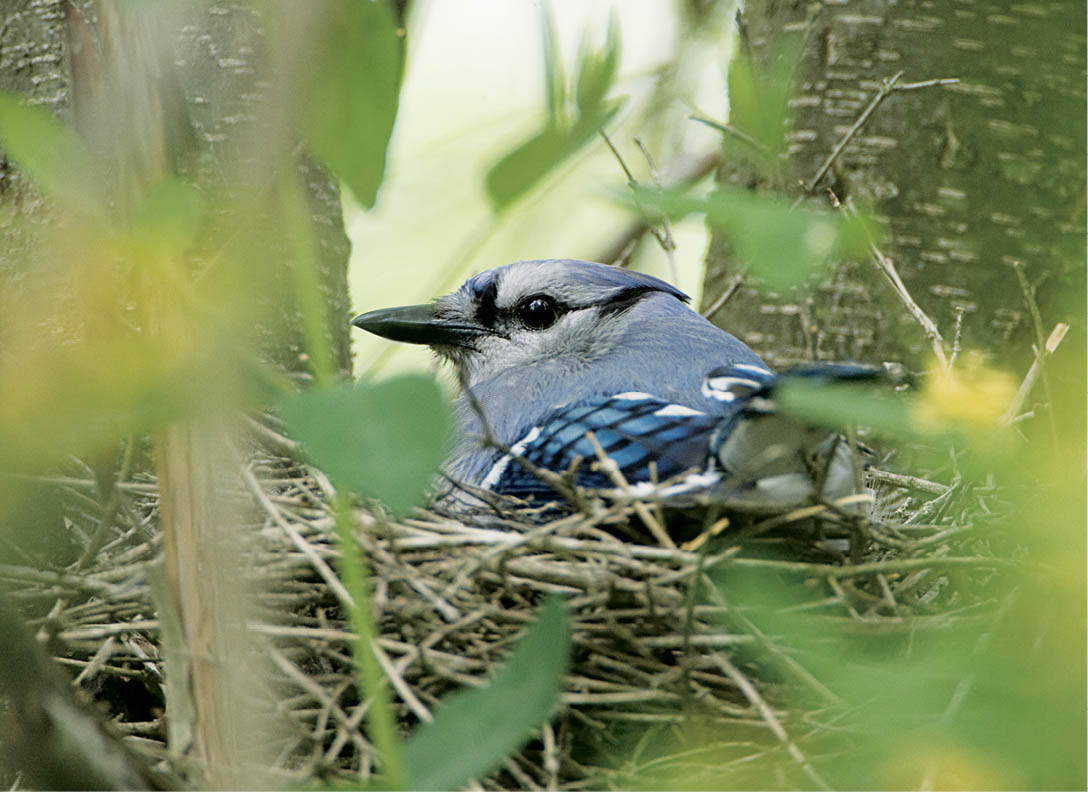
Hatchlings. These altricial Blue Jay chicks hatched naked with eyes closed. Within hours they raise their heads to the nest rim and beg. Their eyes open in 5 days.
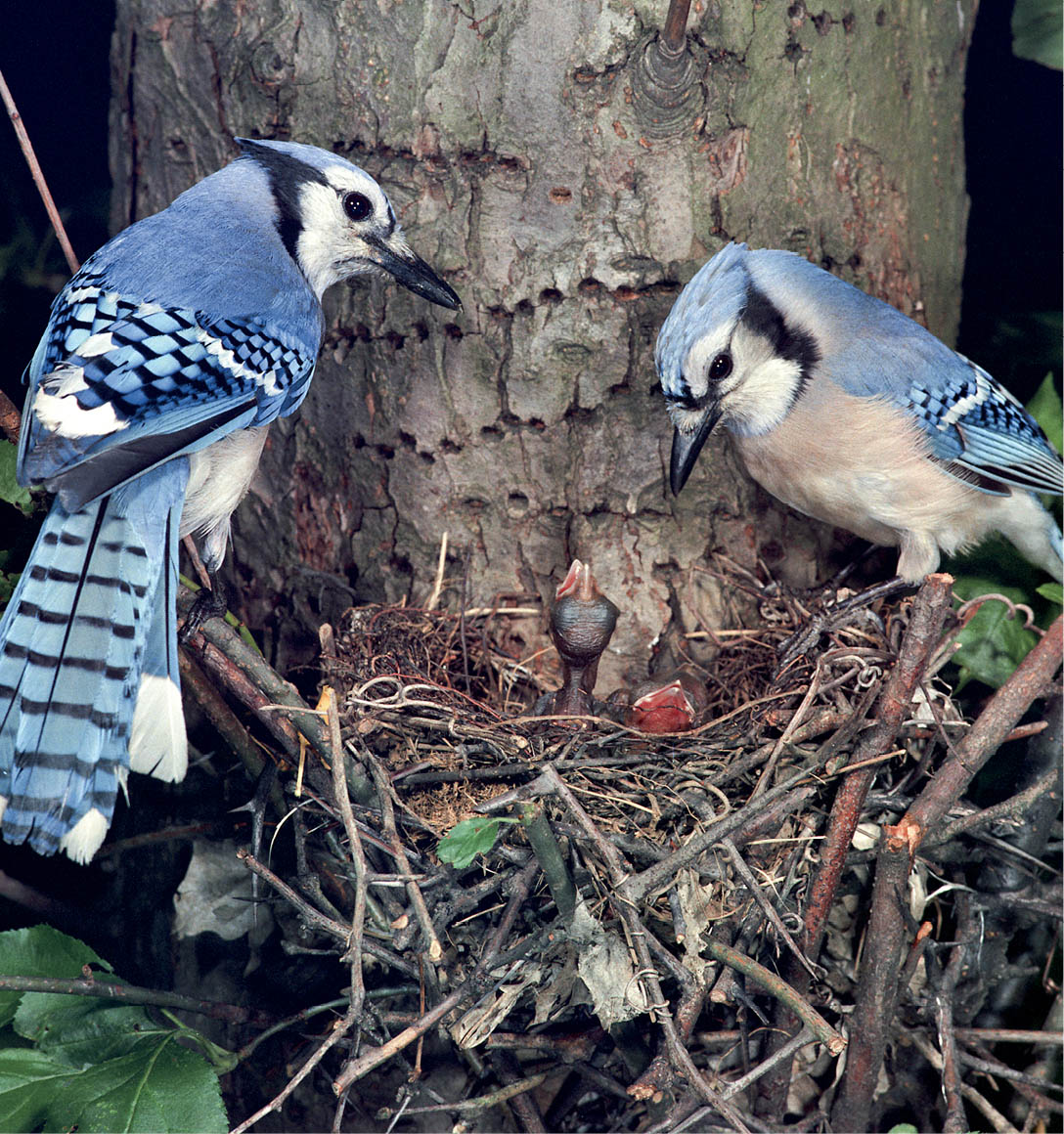
11–14 days old. Four nestlings beg from their parent. Their eyes are fully open, their bodies well feathered, and their wing feathers at the brush stage, partially broken out of their sheaths. Their throat feathers are just starting to emerge through the skin. They no longer need brooding, so both parents provide food.
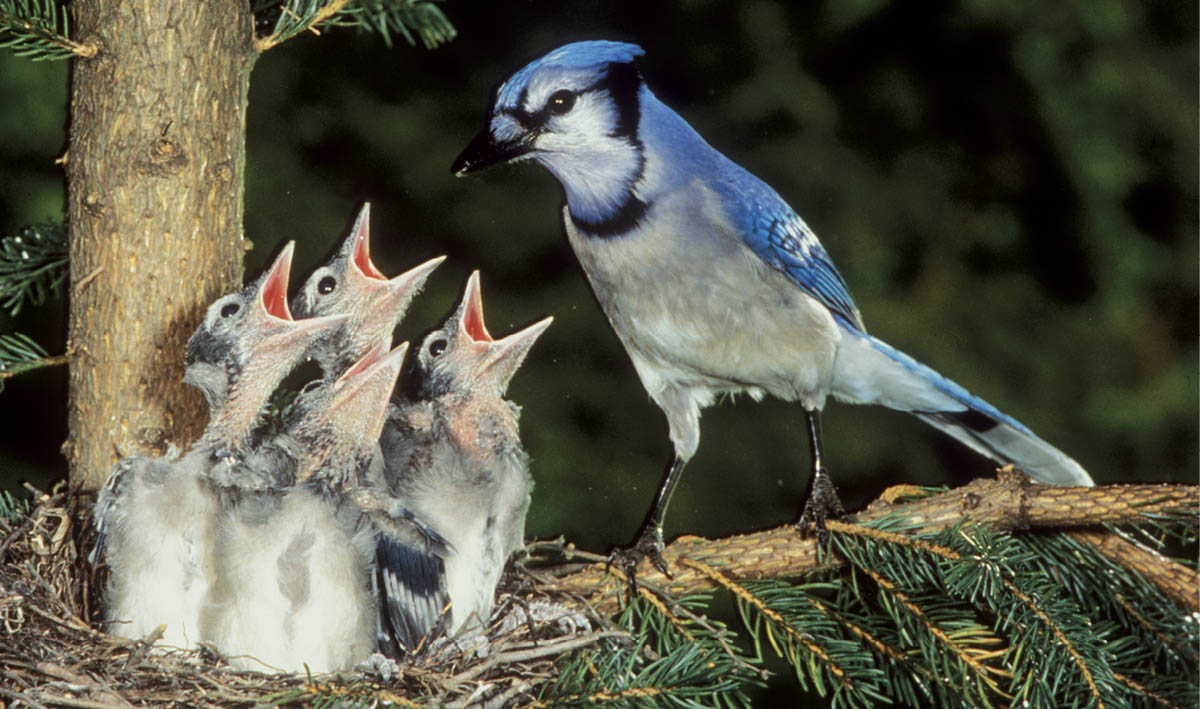
Almost fledged. Strong and active, Blue Jay nestlings stand up in the nest to vigorously beg from their incoming parent. Their wing feathers are well grown, but their tail feathers are still very short.
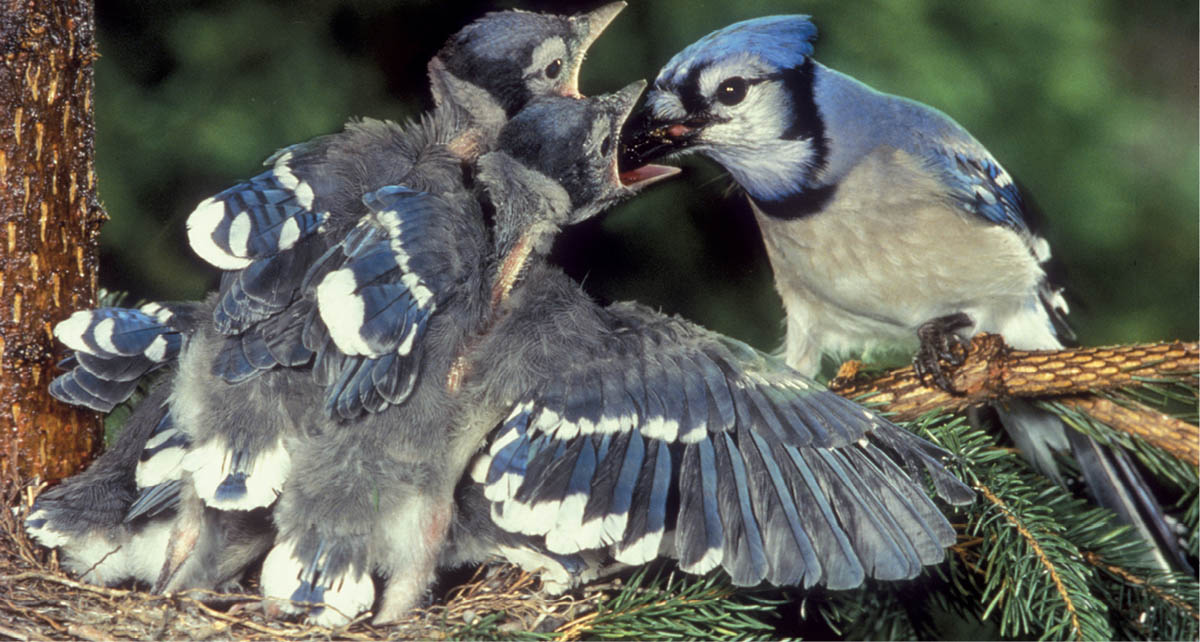
Just out of the nest. Short wings and a tiny tail identify this Blue Jay as a fledgling. Some nestlings may perch outside the nest for a few days before the brood fledges, even venturing short distances, but return to be fed. When 16–21 days old, the brood usually leaves the nest together, but the young birds fly only short distances at first.
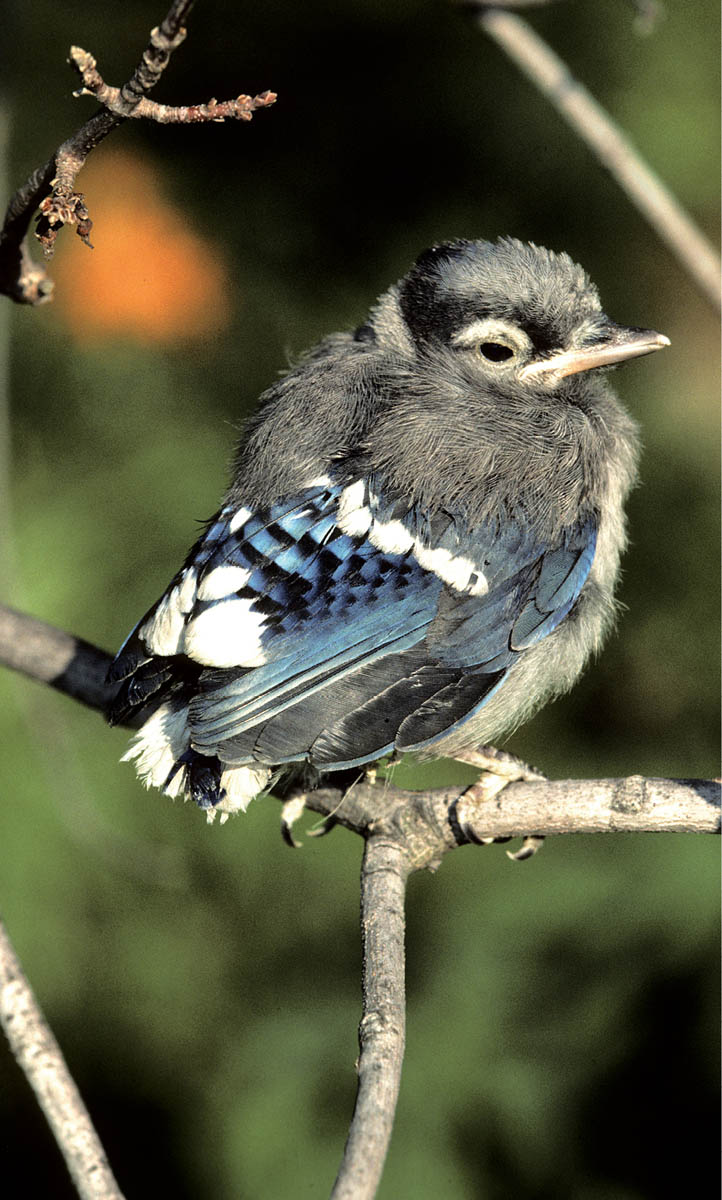
By the time jays fledge, 16 to 21 days after hatching, they are very active, hopping to nearby branches and returning to the nest for feedings. Young jays tend to stay together after fledging, and parents feed them for another month or two. Once their tails reach full length, it’s hard to identify jays by age in the field.
Fledgling jays are extraordinarily appealing, with big dark eyes, bright red mouths, and tiny tails. They are interested in everything going on around them, and they notice and learn from their siblings. When one young Blue Jay samples a caterpillar, its siblings watch closely, and are soon sampling caterpillars, too.
Blue Jay pair bonds seem to be permanent, the two staying together year-round until one dies. Banded individual Blue Jays are known to have lived at least 17 years in the wild.
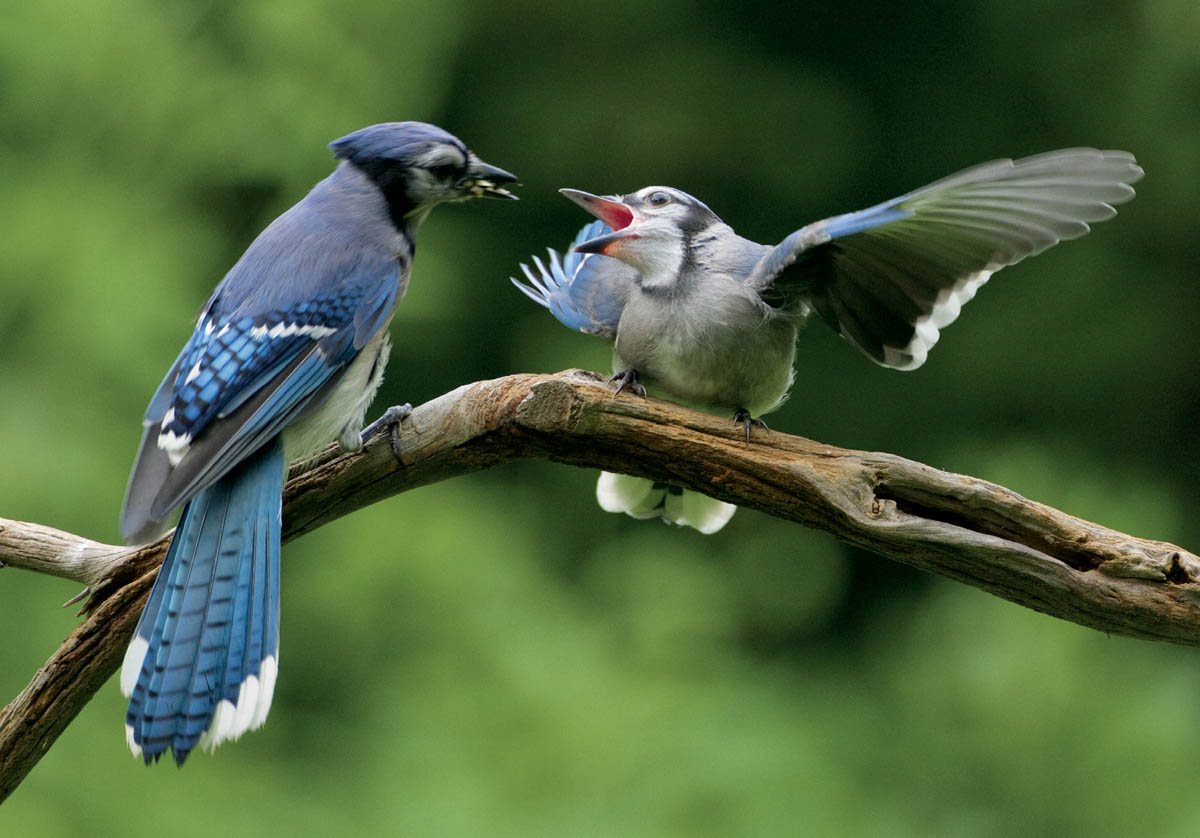
A week or two out of the nest, a Blue Jay fledgling begs from its parent. Its wing and tail feathers are well developed, so it can now fly strongly. Blue Jay families can be quite conspicuous and noisy at this stage, the young begging relentlessly as they fly after their harried parents.